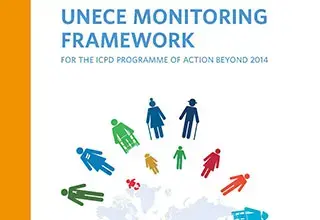The ICPD Beyond 2014 Global Survey has been implemented in the countries and territories of the United Nations Economic Commission for Europe (UNECE) region to explore where they stand with regard to implementing the Cairo Programme of Action (PoA) adopted at the 1994 International Conference on Population and Development (ICPD). The Survey was designed with three objectives: first, to assess the implementation status of commitments made in Cairo in 1994, with emphasis on legislation and policy formulation, establishment of governance structures, and actions executed; second, to identify facilitating factors as well as barriers to the implementation of commitments; and third, to identify new national priorities and emerging issues.
This report analyses selected sections of the ICPD Beyond 2014 Global Survey for the Eastern Europe and Central Asia (EECA) region and covers the EECA countries/territories that have filled out the questionnaires. The Global Survey was designed to collect detailed information about policies, programmes, and strategies, their implementation, and collaborating institutions/organisations. The three thematic areas selected for analysis in the questionnaire are ‘Addressing the needs of adolescents and youth’, ‘Family and the well-being of individuals and societies’, and ‘Gender equality, equity, and the empowerment of women’. This analysis aims to contribute to the understanding of the country profiles for these three areas in response to the ICPD PoA. Analysis of the selected thematic areas is expected to provide input for responding to the population challenges faced in the region.




